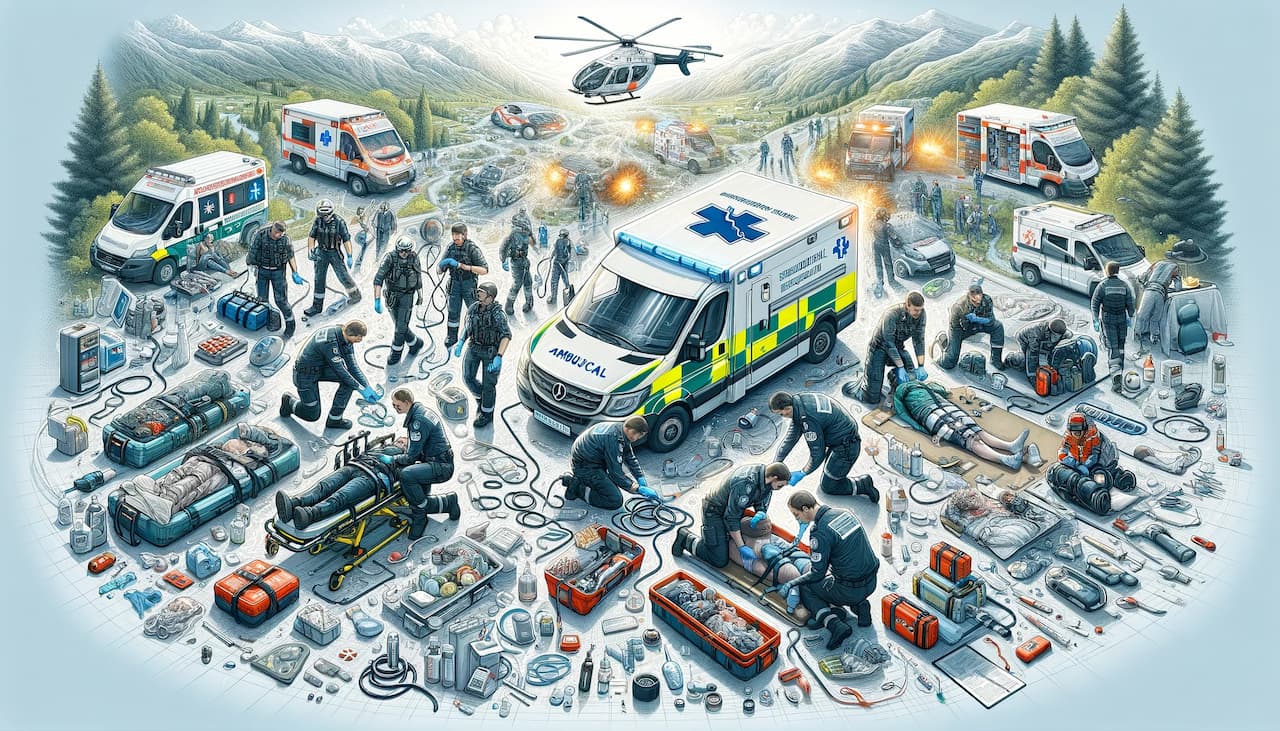
Pre-hospital care represents the crucial initial steps taken to preserve life, prevent a patient’s condition from worsening, and lay the groundwork for their subsequent medical treatment and recovery. This care, which can be self-administered or provided by a bystander, is pivotal in emergency situations like sudden illnesses or accidents. The primary objectives of pre-hospital care include life preservation, condition stabilization, and facilitation of recovery, making it an indispensable component of emergency response.
In the realm of emergency health scenarios, the significance of timely and effective pre-hospital care cannot be overstated. It encompasses a range of interventions from basic first aid to advanced life support, aimed at addressing immediate health crises before professional medical help is available. This article delves into the essentials of pre-hospital care, outlining key strategies, common scenarios, and the profound impact of these early interventions on patient outcomes.
Essentials of Early Emergency Response: A Crucial Lifeline
Early emergency response represents the critical first line of medical assistance, offering immediate aid to individuals requiring urgent medical care before hospitalization. This essential segment of emergency medical services is fundamental in saving lives, averting the deterioration of health conditions, and setting the stage for effective recovery. Its significance lies in providing prompt, skilled, and effective medical interventions during the crucial initial hours of medical emergencies, markedly impacting patient survival rates and long-term health outcomes.
The breadth of early emergency response transcends simple medical aid; it involves a comprehensive strategy that incorporates swift evaluation, clear communication, strategic coordination, and empathetic patient interaction. Typically, this response is carried out by proficient individuals such as paramedics, emergency medical technicians (EMTs), or informed laypeople and first responders, who can offer essential aid until professional medical services are available.
Core Elements of Early Emergency Response
Early emergency response is multifaceted, comprising several critical components that together enhance its success in urgent medical scenarios. Recognizing these factors is essential for everyone engaged in emergency care, from certified first responders to bystanders equipped with fundamental first aid skills.
- Swift Evaluation and Triage: The foremost action in early emergency response is the rapid evaluation of the patient’s health status and identifying the urgency of their medical needs. Triage is vital in incidents with multiple victims, enabling the prioritization of care based on the severity of individuals’ conditions.
- Critical Immediate Interventions: In emergencies where life is at stake, quick measures such as cardiopulmonary resuscitation (CPR), hemorrhage control, or managing breathing pathways can be lifesaving. These crucial steps necessitate immediate execution and are typically conducted at the incident scene ahead of hospital transfer.
- Prompt and Secure Transportation: A key aspect of early emergency response is ensuring the patient’s rapid and safe delivery to a suitable medical facility. This includes selecting the most appropriate transportation method (e.g., ambulance, air transport) and ongoing patient monitoring and stabilization during transit.
- Coordinated Communication: Seamless interaction between the on-site emergency team and the destination hospital is vital for uninterrupted patient care. This encompasses transmitting critical patient data, administered treatments, and the estimated arrival time, thus allowing hospital personnel to be fully prepared for the patient’s entry.
- Emotional and Psychological Care: The provision of mental and emotional support is a fundamental part of early emergency response, offering solace and reassurance to patients and their relatives in often distressing circumstances.
Critical Aspects of Efficient Early Emergency Response
- Expedited Evaluation: Rapid and precise assessment of the patient’s medical state to identify immediate care requirements.
- Urgent Resuscitation: Administering crucial life-preserving actions such as CPR to maintain vital functions.
- Stabilization of Injuries: Implementing measures to mitigate further injury and secure the patient for transportation.
Pre-Hospital Care Interventions: A Closer Look
| Intervention | Description | Benefits |
| Basic Life Support (BLS) | Non-invasive emergency procedures like CPR. | Can be life-saving and is crucial for maintaining patient stability until professional help arrives. |
| Advanced Life Support (ALS) | More complex medical procedures often performed by trained professionals. | Enhances survival prospects significantly, especially in severe medical emergencies. |
| Trauma Care | Specific interventions aimed at managing severe injuries. | Prevents complications and improves chances of recovery in trauma cases. |
Frequently Asked Questions (FAQ)
What is the main goal of pre-hospital care?
The primary aim is to save lives, prevent the patient’s condition from deteriorating, and prepare for their eventual medical treatment and recovery.
Can non-medical individuals provide pre-hospital care?
Yes, non-medical individuals can perform basic first aid and life-saving interventions while waiting for medical professionals to arrive.
How important is time in pre-hospital care?
Time is critical; immediate care can significantly influence the outcome, reducing the severity of the injury and improving survival rates.
Pre-hospital care is a vital aspect of emergency medical services, providing the initial treatment in critical moments that can mean the difference between life and death. Understanding and implementing these measures can dramatically improve the chances of recovery and survival in many emergency situations.
For more insights on emergency care strategies, consider exploring this comprehensive guide on emergency response techniques and this detailed article on structuring emergency care training programs.